Equipment
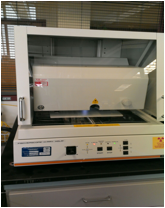
This is the Fisherscope XRF X-Ray Fluorescense tool. The XRF can indicate multilevel material thickness and or material type. This XRF detects the difference between upper and lower electron orbital voltage difference and returns a corresponding material. The usage of this XRF tool requires the users to wear a dosemeter that will meter X-ray exposure.
GC
Focus on gasious samples at normal temperatures and can do large polymers if pyrolysed.
FID
Mass Spec
HPLC
High Performance Liquid Chromatrogaphy focus on much more samples than GC. and can do large molecule polymers if soluable. Maximum of 100 vials can be selected for and extensive Experiment. Moble phase can be consistant or variable and the coulmn can also be heated. Pressure limits are software controlled. See below a summary of HPLC instruments. Samples that have an affinity to column components stay longer in the column and samples that do not have an affinity to column components move through the column faster.
DAD is a UV/VIS detector with an array of sample detectors. This DAD instrumnet has a photodiode array to determine many wavelengths at one time. This de
RID is Refractive Index Detector detects changes in refractive index and needs to be balanced before running. This instrument compares the non changing mobile phase with any changes caused by the sample injection.
FLD the most sensitive detector detecting at best on the single atom level. Only substances that fluoress can be detected.
This detector
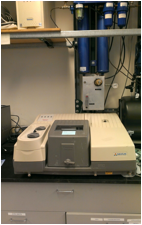
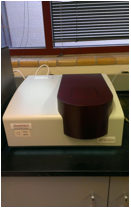
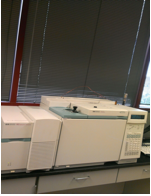
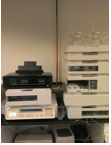
The LCMS tool in the Alderson 463 laboratory has three separate instruments associated with it (FLD, DAD and RID). The FLD, Fluoresence, DAD, Diode, and RID, Reflectance, can detect liquid injected fluoresing materials, UVVIS anything and materials down to an atomic level, respectively. Use of the tool requires making methods that involve gradient or isocratic solvents that will be introduced into a specific, sample related, static column so as to identify the sample by the sample's characteristic peak.
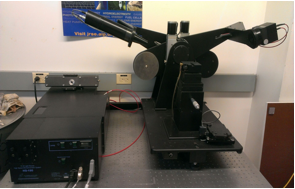
The VASE Ellipsometer in Alderson 453 Labratory uses polaraized light to characterise the sample under measurement. This VASE, Variable Angle Spectroscopic Ellipsometer, can measure film sample thicknes of a nanometers to a few micrometers. The useage of the VASE requires initialization, calibration, alignmemt, film series constant lookup and modeling (psi and delta).
